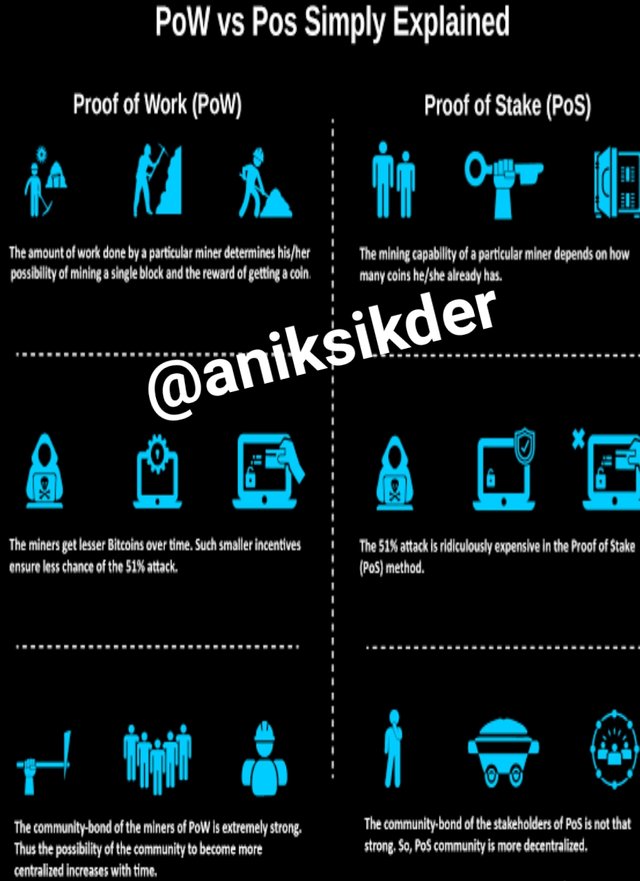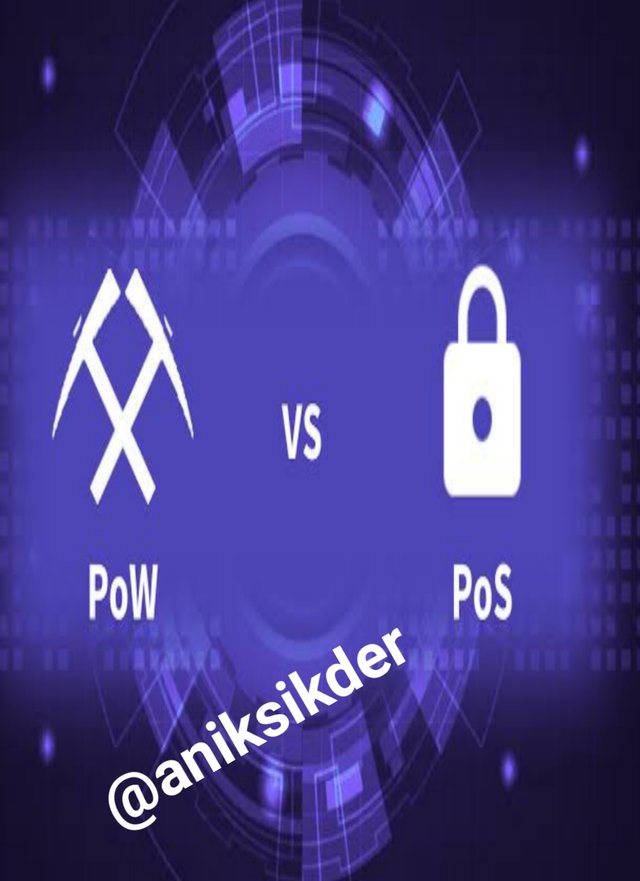Steemit Crypto Academy Season 3 Beginners' course – Homework for Task 4: Different types of Consensus Mechanisms for Professor @sapwood by @aniksikder
HOMEWORK BEGINNER'S COURSE TASK 4 (Different types of Consensus Mechanisms)
CRYPTO PROFESSOR: Sapwood
Hello Dear Professor sir @sapwood, thank you for this great and educative lecture. I am happy to see this well structured system and today in this post I will share with you my homework Season 3 beginners' course Task 4 - Different types of Consensus Mechanisms. I arrive with my task number 4 of the beginners course, in which I will focus on answering question number 1. I hope the next one is a comfortable read for you and thanks to teacher @sapwood (75) for class.
- What is the difference between PoW & PoS? Advantages & Disadvantages?
- Which one is better in scaling Capacity? Examples?



Question 1- What is the difference between PoW & PoS?


POW and POS are two separate processes that are subject to computer technology approval and verification. To ensure that Bitcoin is easily accepted. I already found out while doing Task 3 homework that Bitcoin founder Satoshi nakamoto created POW. It was created as a way to secure digital currency. PoW can be both current and previous transaction checking strategies and a quantitative process that selects who validates the next block based on your own owned coins.
At present PoW does not rely on any private third party transjectors. POW determines the amount of energy. POW is an interconnected protocol designed to prevent and deter cyber attacks. However the evidence of partnership is different from POS. This is a method where the verifies is selected from the amount of stack. It is better to have more partnerships. Unlike POW, POS is a centralized system and supports multiple partners.
Advantages & Disadvantages
- POW advantages and disadvantages
Blockchain was originally created to work users to avoid additional currency printing. They want to cut where nothing has been cut. Here the speed is calculated based on the production time of the network block at all times. That is why they are chosen at random. PoW has limited scaling capacity and power is not enough, so the PoW article is safe.
- POS advantages and disadvantages
If your coins are here, those who are hoarding their currency will be able to vote for the two-block blockchain. PoS does not require any mining camouflage. POS has efficient power and POS has a central system so POS always has a secure system that never gets in trouble. Here blockchain users were originally made to work proof to avoid extra coin printing. They want to cut where nothing has been cut and again some are at risk of being attacked by double printing of their money even after making it.


Question 2- Which one is better in scaling Capacity? Examples?


POS provides several answers to the scaling of bitcoin and is a solution that seeks to establish quantities before creating blocks that address the major challenges of transaction speed and energy usage. You will notice that scalability is not possible with POW, but possible with POS. The proof of partnership in scaling power is much better than the proof of work here so due to the features of currencies like Dash, Neo, Tez and Etherum have already announced the shift from PW to POS. Even then, if a blockchain network has a high volume of transactions and verifications, it is scalable and its height increases a lot.
Addition to achieving our less rapid transaction duration, POS operations already address the large-scale scalability issues faced by POW. Understand them but you will notice that scalability is not possible with PW, but is possible with POS.

CONCLUSION

This is the end of my Homework post for Task 4. Thank you so much Professor @sapwood for giving us this knowledge. I believe that all newcomers like me can achieve a lot by trying this post. As my conclusion, here is the POS both have their own importance in their own way. So the purpose of both of them is to give legitimacy to a transaction and both have some benefits and some aspects. PoS is better at scaling capabilities because it has efficient power as well as stakeholders can get many rewards at different times. Here runs in a centralized system with more power. If a blockchain network has a high volume of transactions and verifications, it is scalable. So I came to the point that the scaling power of PoS is much better than PoW.
This is important in the sense that it could legitimize transactions with a low reward transaction fee for a few lesser people and therefore lead to an aggressive attack on the blockchain. Evidence of our evidence is that instead of relying on miners with blockchain verification offering completely different counts, here POS networks give cryptocurrency owners the opportunity to vote. That's why Proof of Work and Proof of Stack are the most well known processes used today. PoS has come up as an alternative and solution to the PoW deficit and so I think there is a need to be more standardized than having a miner.

Again thank you for reading my homework. Thank you all very much, specially Professor @sapwood.
Regards:
@sapwood
@steemitblog
@awesononso
Written by
@sapwood
@steemitblog
@awesononso


Here Twitter Link